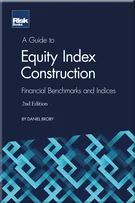Accounting for KVA under IFRS 13
Richard Kenyon and Chris Kenyon
Accounting for KVA under IFRS 13
Introduction
Preface to Chapter 1
Being Two-Faced over Counterparty Credit Risk
Risky Funding: A Unified Framework for Counterparty and Liquidity Charges
DVA for Assets
Pricing CDSs’ Capital Relief
The FVA Debate
The FVA Debate: Reloaded
Regulatory Costs Break Risk Neutrality
Risk Neutrality Stays
Regulatory Costs Remain
Funding beyond Discounting: Collateral Agreements and Derivatives Pricing
Cooking with Collateral
Options for Collateral Options
Partial Differential Equation Representations of Derivatives with Bilateral Counterparty Risk and Funding Costs
In the Balance
Funding Strategies, Funding Costs
The Funding Invariance Principle
Regulatory-Optimal Funding
Close-Out Convention Tensions
Funding, Collateral and Hedging: Arbitrage-Free Pricing with Credit, Collateral and Funding Costs
Bilateral Counterparty Risk with Application to Credit Default Swaps
KVA: Capital Valuation Adjustment by Replication
From FVA to KVA: Including Cost of Capital in Derivatives Pricing
Warehousing Credit Risk: Pricing, Capital and Tax
MVA by Replication and Regression
Smoking Adjoints: Fast Evaluation of Monte Carlo Greeks
Adjoint Greeks Made Easy
Bounding Wrong-Way Risk in Measuring Counterparty Risk
Wrong-Way Risk the Right Way: Accounting for Joint Defaults in CVA
Backward Induction for Future Values
A Non-Linear PDE for XVA by Forward Monte Carlo
Efficient XVA Management: Pricing, Hedging and Allocation
Accounting for KVA under IFRS 13
FVA Accounting, Risk Management and Collateral Trading
Derivatives Funding, Netting and Accounting
Managing XVA in the Ring-Fenced Bank
XVA: A Banking Supervisory Perspective
An Annotated Bibliography of XVA
Changes in capital requirements due to Basel 2.5 (Basel Committee on Banking Supervision 2011b) and Basel III (Basel Committee on Banking Supervision 2011a) contributed to major reorganisations in trading activity after the financial crisis of 2008. Surveys by Sherif (2015) and Ernst & Young (2015) indicate that banks are pricing the lifetime cost of capital (KVA) into trades, and pricing methods have been formalised (Green et al 2014; Kenyon and Green 2015; Elouerkhaoui 2016b) but no accounting treatment has been presented. By accounting treatment we mean both the values of the numbers and where they should go. This chapter addresses this gap from the point of view of the International Accounting Standards Board (IASB) standards, reflecting IFRS 13 (Fair Value Measurement; see IFRS Foundation 2014c) in particular.
As an indication of the economic relevance of KVA, consider the case where only the capital costs over the first year are included in trade pricing, but lifetime capital costs are not. What happens in subsequent years? Either the return on capital required by the shareholders is not met, or new business must be done at higher prices in order to pay capital costs from
Copyright Infopro Digital Limited. All rights reserved.
As outlined in our terms and conditions, https://www.infopro-digital.com/terms-and-conditions/subscriptions/ (point 2.4), printing is limited to a single copy.
If you would like to purchase additional rights please email info@risk.net
Copyright Infopro Digital Limited. All rights reserved.
You may share this content using our article tools. As outlined in our terms and conditions, https://www.infopro-digital.com/terms-and-conditions/subscriptions/ (clause 2.4), an Authorised User may only make one copy of the materials for their own personal use. You must also comply with the restrictions in clause 2.5.
If you would like to purchase additional rights please email info@risk.net









